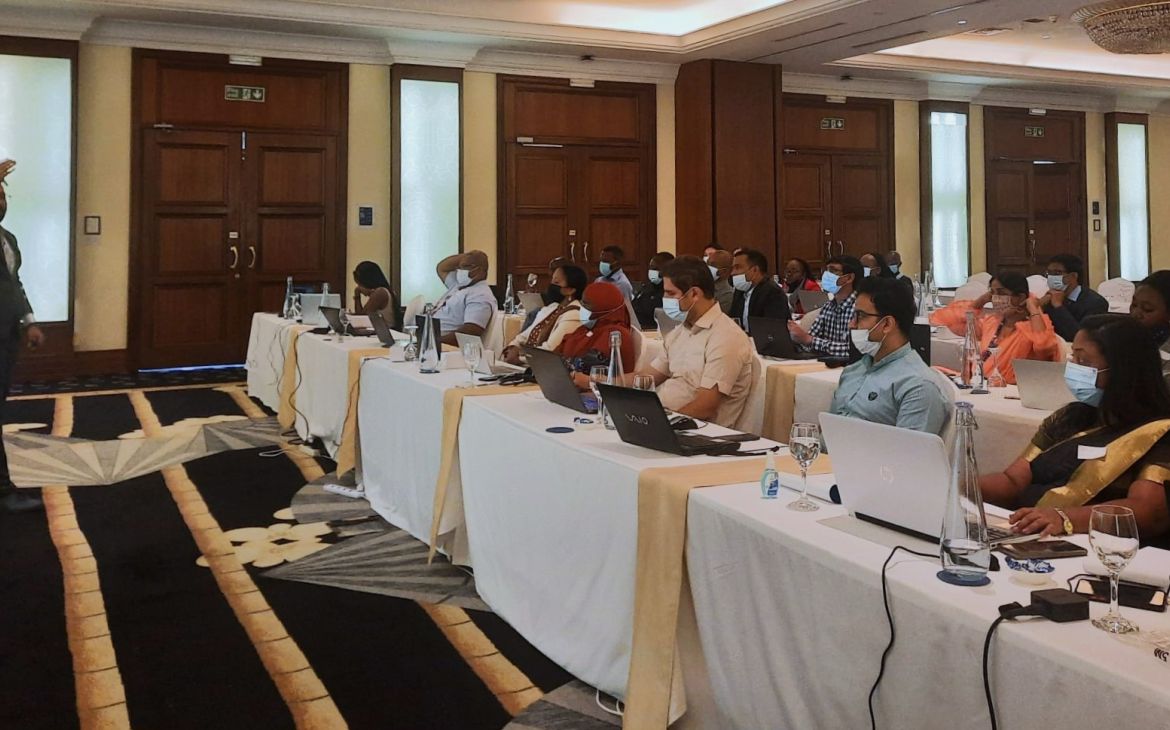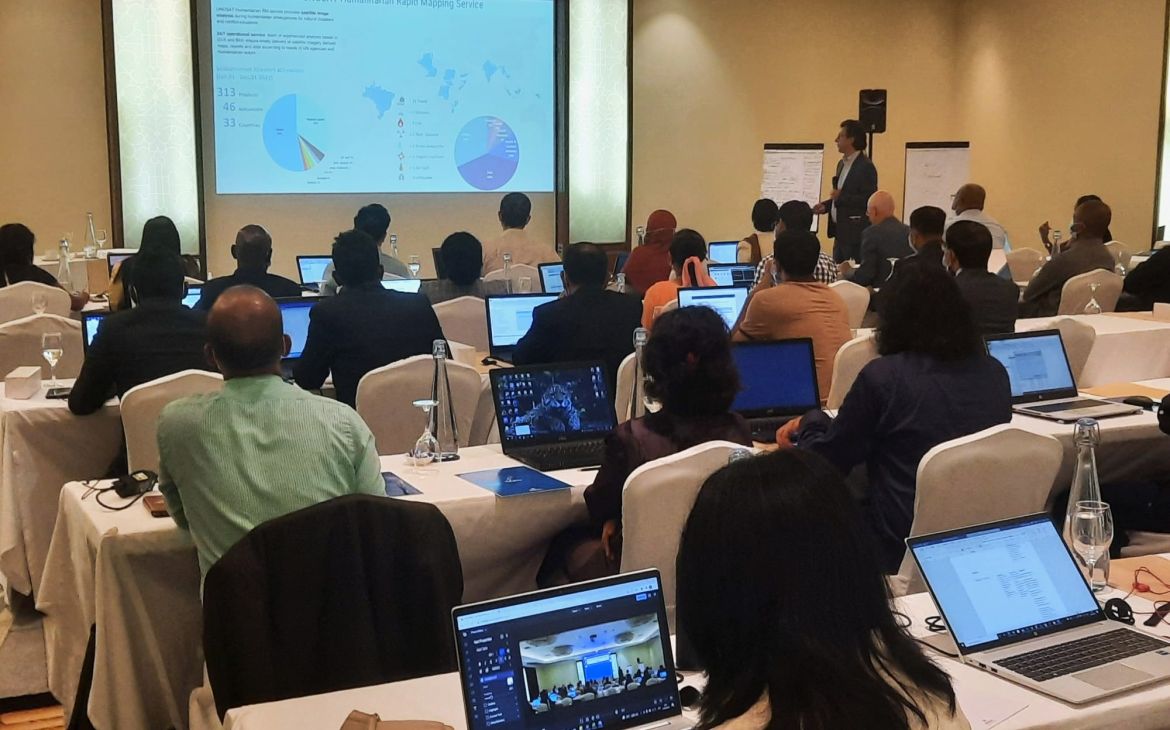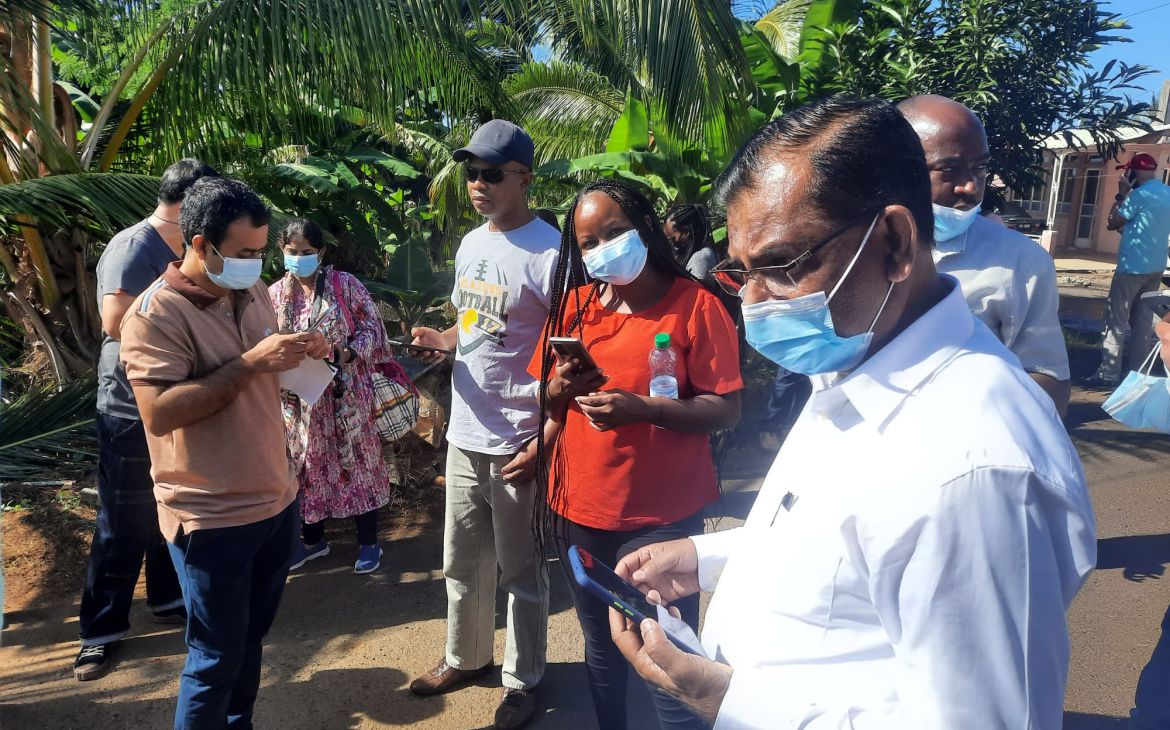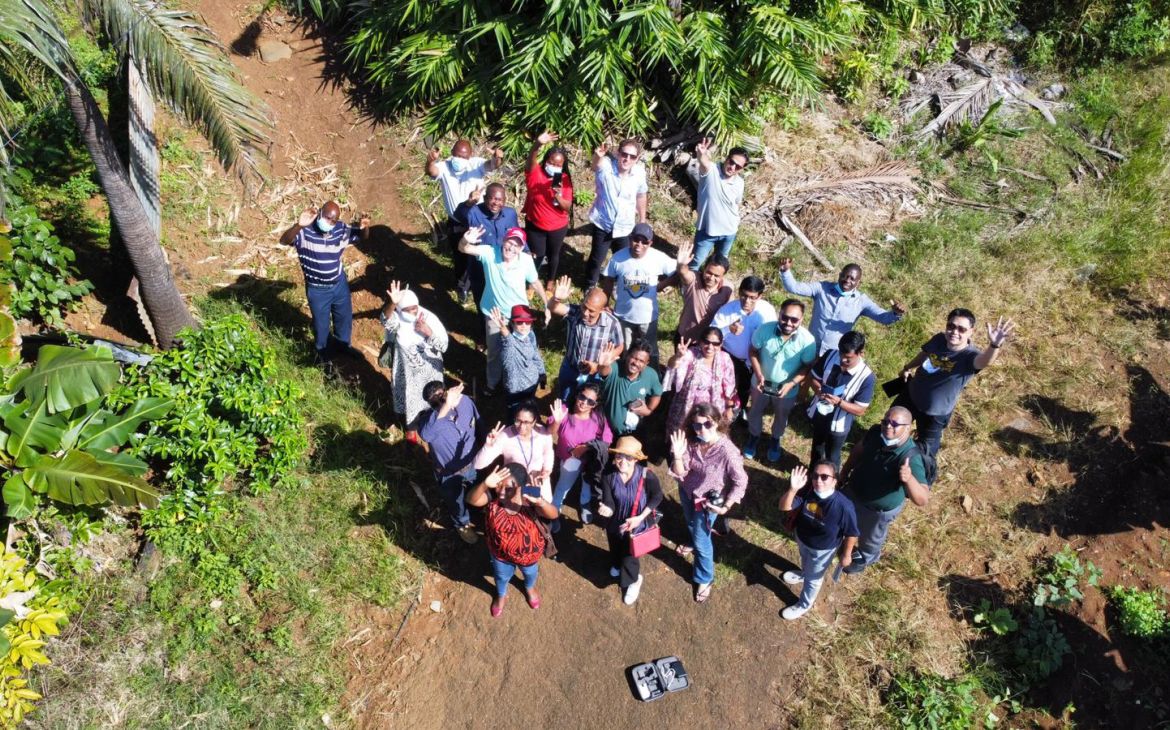21 July 2022, Geneva, Switzerland - The Indian Ocean Region (IOR) is sometimes referred to as the “World’s Hazard Belt”. During the past five years, the region experienced tsunamis and earthquakes in Indonesia, severe droughts in Madagascar, floods and landslides in India, seasonal cyclones in the Islands of the Indian Ocean, and many more calamities. In these countries prone to both man-made and natural hazards, the domino effect on poverty, famine, societal imbalance cannot be discounted. Disaster Risk Management (DRM) is a priority area of collective interest to the Indian Ocean Rim Association (IORA) Member states.
Geospatial Information Technology (GIT) is a robust tool in support to the whole DRM cycle starting from the preparedness to response, recovery, and reconstruction. IORA called on UNOSAT, with the support of the German Development Agency (GIZ), to strengthen their GIT capacities in this regard. In September 2021, a webinar launched the training programme on GIT for Operational Planning and Decision Making in DRM. The training activities targeting mainly DRM experts of the IORA region were delivered online, through an e-learning course conducted by UNOSAT.
On June 13th, 2022 the second part of the training programme started, with a week-long face-to-face course. The participants benefited from a hands-on in-person delivery, with most of the training consisting of practical lab exercises. This helped them not only assimilate the knowledge and skills faster, but also apply directly to case studies relevant to their scope of work.
After recalling concepts and terminologies covered in the online training in 2021, participants were able to apply the basic methods and functionalities of GIS software. Some of the main topics covered included disaster risk assessment, Rapid Response Mapping in Emergency Situations, flood exposure assessment, multi-criteria decision analysis, and geospatial data collection. Lack of access to reliable and free geospatial data is one of the key challenges governments face to apply geospatial technologies to support disaster risk management operations. In the training, participants learned about free sources to access satellite images as well as open-source field data collection applications. Their newly learned skills to collect and analyse geospatial information will allow for a more comprehensive assessment and reinforce the evidence-based decision-making for overall risk reduction policies and planning.





